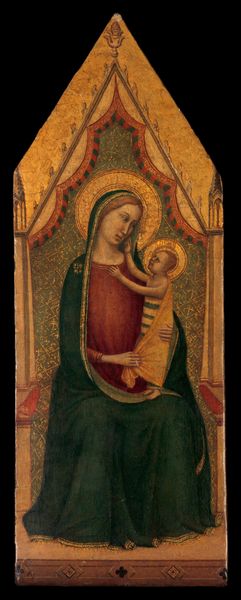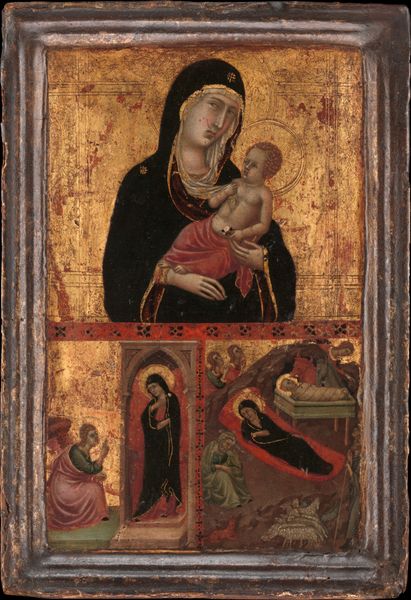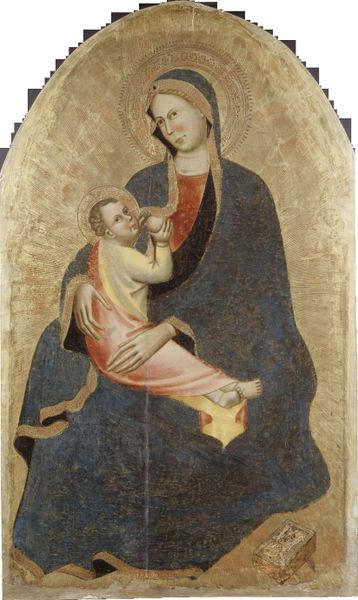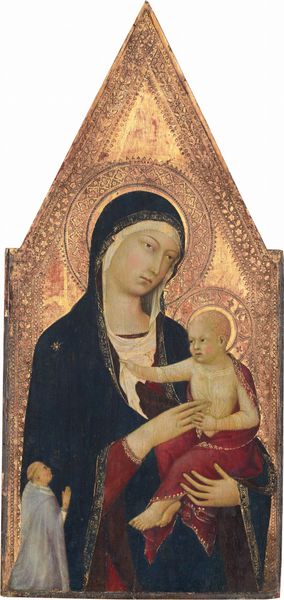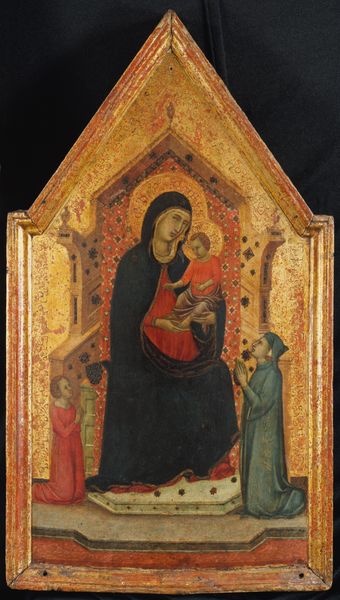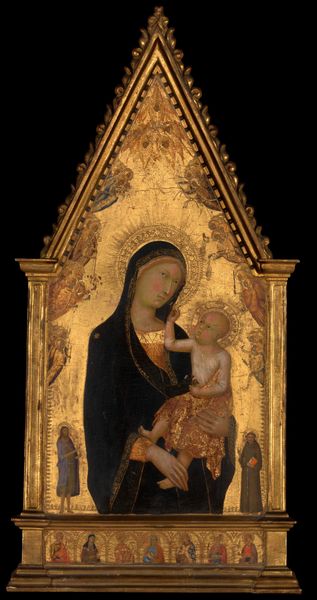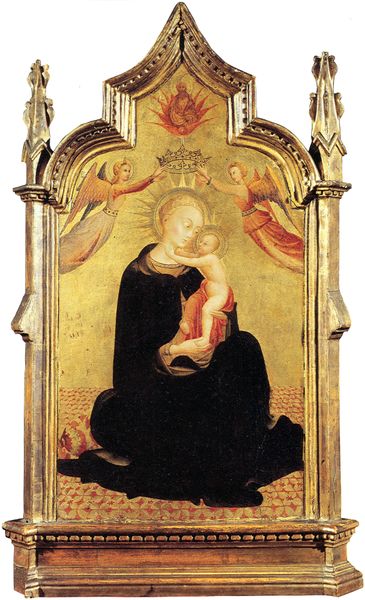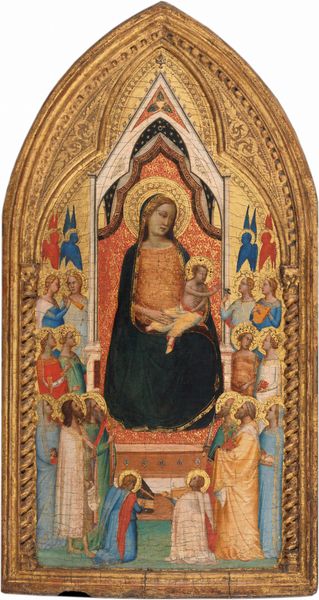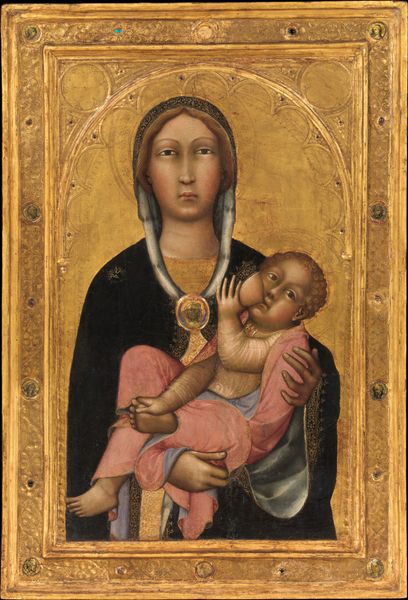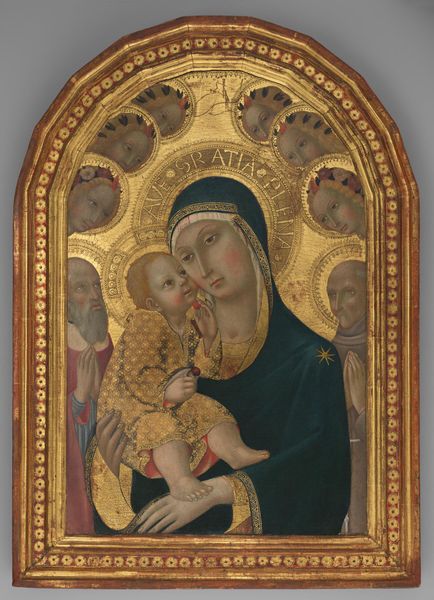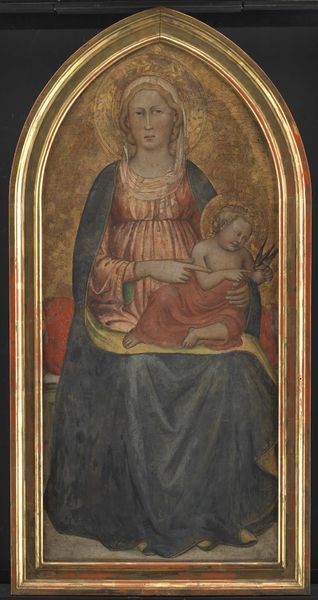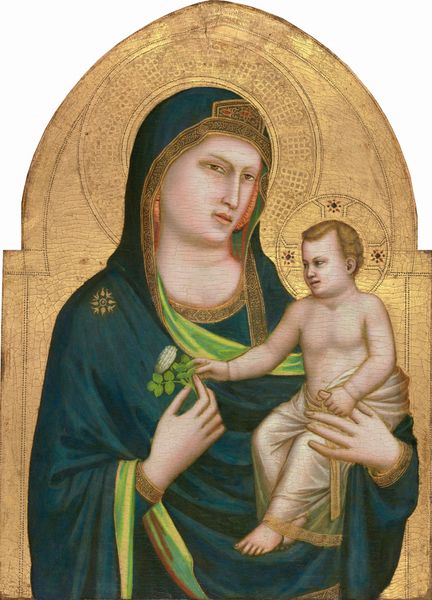
tempera, painting
#
portrait
#
tempera
#
painting
#
sienese-school
#
oil painting
#
italian-renaissance
#
early-renaissance
#
miniature
#
watercolor
Dimensions: overall: 48.4 x 21.2 cm (19 1/16 x 8 3/8 in.) framed: 62.9 x 25.4 cm (24 3/4 x 10 in.)
Copyright: National Gallery of Art: CC0 1.0
Curator: Here we have Sassetta's "Madonna of Humility," a tempera on panel from about 1435 to 1440, an exquisite example of the early Italian Renaissance. Editor: What strikes me first is its intimacy—it feels very tender, despite the formal presentation. The color palette is so soft, muted, almost like a faded memory. Curator: Indeed. Note the carefully constructed composition. Sassetta employs a hierarchical scale, subtly emphasizing Mary's importance. Observe, too, the triangular format and gilded background typical of the period. These elements, informed by religious conventions, contribute to the artwork's overall sense of solemnity. Editor: The way the artist handles light is amazing; look how the halos feel like a warm emanation rather than rigid forms. It really pulls me in. Curator: Consider the symbolic weight, as well. The 'Madonna of Humility' presents Mary seated not on a throne, but on the ground. This symbolizes her humility. Even the placement of Christ on her lap subtly underlines a relationship between mother and child. Note that he is looking at her as well, further indicating the profound link between them. Editor: You're so right, there's such an amazing paradox, here! Her posture exudes serene grace, despite her "humble" position, suggesting a hidden inner strength, or perhaps that strength and grace may be possible only when born of great humility! Curator: Precisely. Sassetta utilizes simple yet precise forms to enhance meaning. The folds in Mary's cloak, the delicate rendering of Christ's features—all meticulously designed to draw the viewer into a contemplative state. Even the choice of tempera affects how the painting communicates. Editor: It all sings a rather delicate ballad! After this little conversation, the piece now appears far less an untouchable religious icon and far more human to me. Thanks to that, the spiritual element now presents itself far better. Curator: It has been most enlightening to deconstruct Sassetta's construction. Thank you for offering the perspective of feeling within it.
Comments
No comments
Be the first to comment and join the conversation on the ultimate creative platform.
